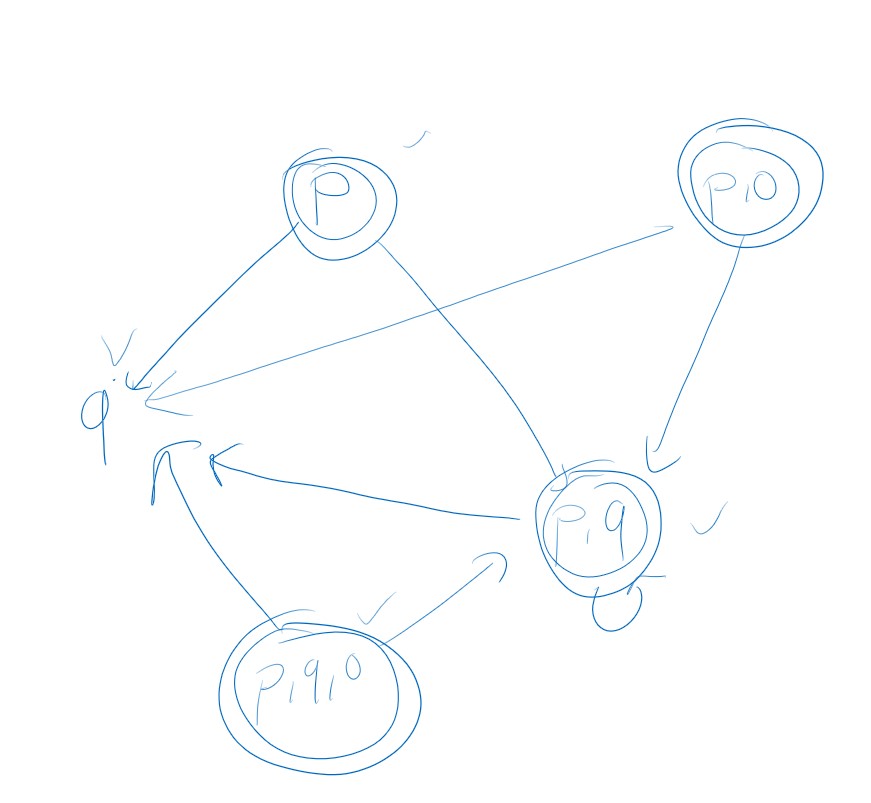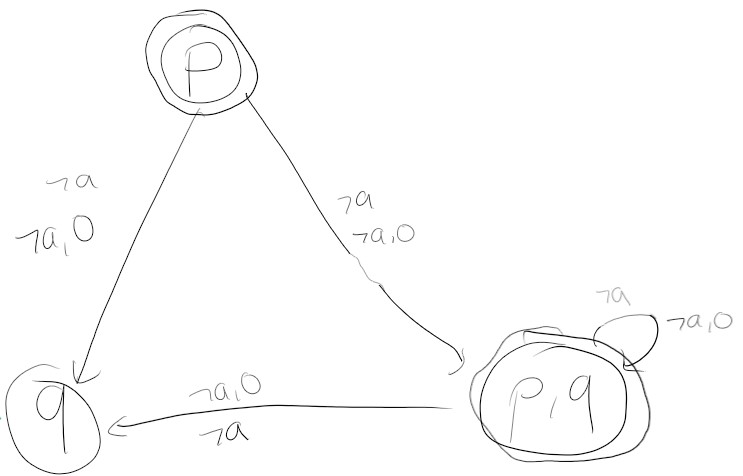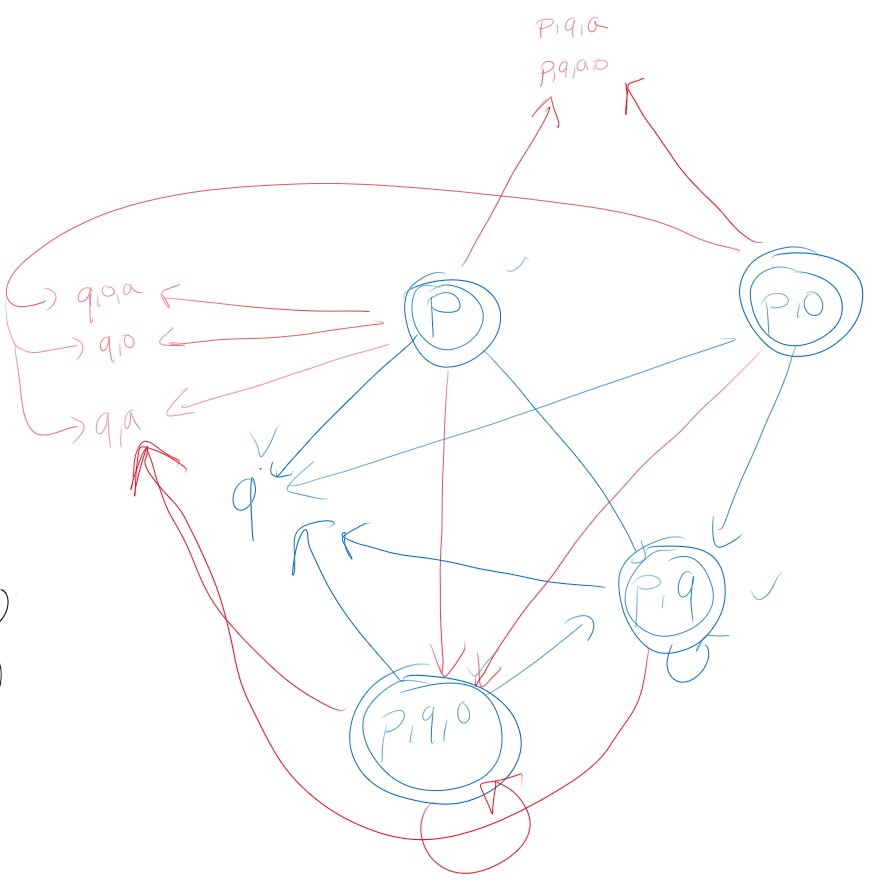I am trying to define the reacheble states for the following graph:

In my FSM, the initial state had to satisfy p.
According to the exercise session presentation for exercise 4, page 4, we need to remove deadends from the set of initial states (even though this doesn't really make sense according to the definition in the lecture VRS04-p8). Therefore, p&!q&a&0 would not be an initial state, even though it satisfies p (the condition described by the FSM). Therefore, my initial states have to satisfy p&!a. The student portal accepts this as a correct answer.
I'm now trying to find all reachable states. According to this comment, reachable are those states that lie on an infinite path from an initial state. Therefore, the reachable states in my example should be p&!a, since they lie on an infinite path starting from themselfes with "p,q" However, this does not get accepted as a correct solution. Why?
Edit: Here is my FSM whose transitions got accepted by the student portal:

Edit 2: I found my mistake. I drew the wrong Kripke graph. This is the right one:
